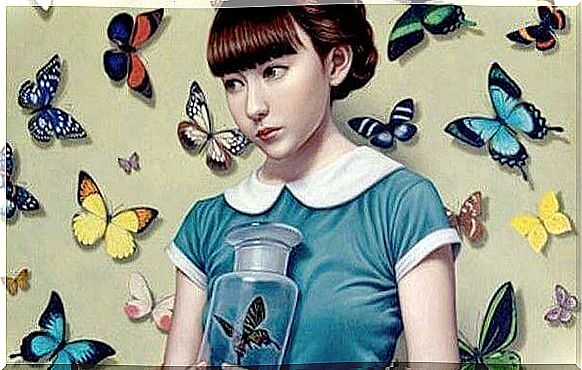Compulsive Accumulators

Being a compulsive accumulator means keeping the wrapping of a candy that our friend gave us at the age of four, an old piece of clothing with holes that we never put on, the flyers we are given in the street , broken vases or vinyl records that we can’t listen to because we don’t have a record player.
A compulsive accumulator is characterized by the fact that he surrounds himself with unnecessary objects, because he cannot develop this criterion which allows him to decide what he should keep or throw away.
It would be rather anecdotal behavior if keeping everything did not lead to health or cohabitation problems.
Also, this is a clear sign that something is wrong with the person in question.
The number of compulsive accumulators in the world is quite impressive. It is estimated that at least 4% of the population presents the symptoms of this pathology, which is equivalent to more or less 300 million people in the world.
Why do some people fill their closets and their lives with insignificant objects to the point of endangering their health and degrading their quality of life?
The origin of compulsive accumulators

In reality, psychologists do not really agree on the factors that would trigger compulsive hoarding.
However, they all agree that it is a disorder that deserves closer attention, and which eventually requires lengthy psychotherapy to be treated.
For Freud, excessive accumulation (or syllogomania) corresponds to the manifestation of a “retentive anal character”.
This type of character is structured during the first years of life, when the child begins the phase of controlling the sphincters.
The child establishes some control over his parents based on how he views going to the bathroom.
In his mind, saddles are a gift he gives or retains depending on the type of bond he has established with his parents.
Retention is a character trait that can remain engraved in the child’s personality from this stage on.
One way or another, the latter expresses an aggressive gesture against his parents, which remains repressed, but which then manifests itself through accumulation or avarice.
There are other views that tend to think that compulsive hoarding is defensive behavior in the face of imaginary threats.
The accumulator assumes that nothing should be thrown away, because “you never know”. In reality, this hides a strong feeling of insecurity in the face of changes.
There are also people who accumulate objects in response to trauma. These are usually people who have been through a situation that left them with nothing, and therefore constantly fear that the same thing will happen to them again.
Likewise, there are people who hold memories as a kind of proof.
This responds to behavior where there is an unconscious feeling of guilt and where people seek to testify on their behalf. In this case, the accumulation operates as an unconscious necessity to brandish evidence.
Characteristics of compulsive accumulators

Often the compulsive hoarder is also a compulsive shopper. As soon as he sees something on sale, he can’t help but acquire it immediately, just because the product in question was cheap, regardless of whether he needed it or not.
It is also common for these people to be lonely people, in part because their obsession with accumulating goods is due to a certain urge to replace people’s company with objects.
People who find it difficult to get rid of items that they do not need experience this “theft” as a real loss.
They suffer from genuine grief as soon as they have to separate from things that are part of their universe.
The drama of compulsive hoarding
This pathology can reach alarming levels as we saw in the case of the Collyer brothers in the United States in 1947.
Their neighbors alerted the police, as it had been a long time since they had seen the brothers come out of their house or give any sign of life.
The authorities did not even manage to enter the house, neither through the door nor through the windows because of the enormous quantity of objects which made access impossible.
One of the brothers was killed by the fall of thousands of books and newspapers, while the other, who was blind and paralyzed, died of hunger and thirst because it was impossible for him to move to reach a tap or the fridge.

In less severe cases, the syllogomania can lead to a monumental mess throughout an entire home or office.
Sometimes, this disorder facilitates the appearance of sores due to a lack of hygiene.
There is no effective method of dealing with compulsive shoppers, but there is no doubt that these people are in great need of professional help in order to unravel what lies behind this anxiety of not wanting to be. separate from obsolete or expired products.









